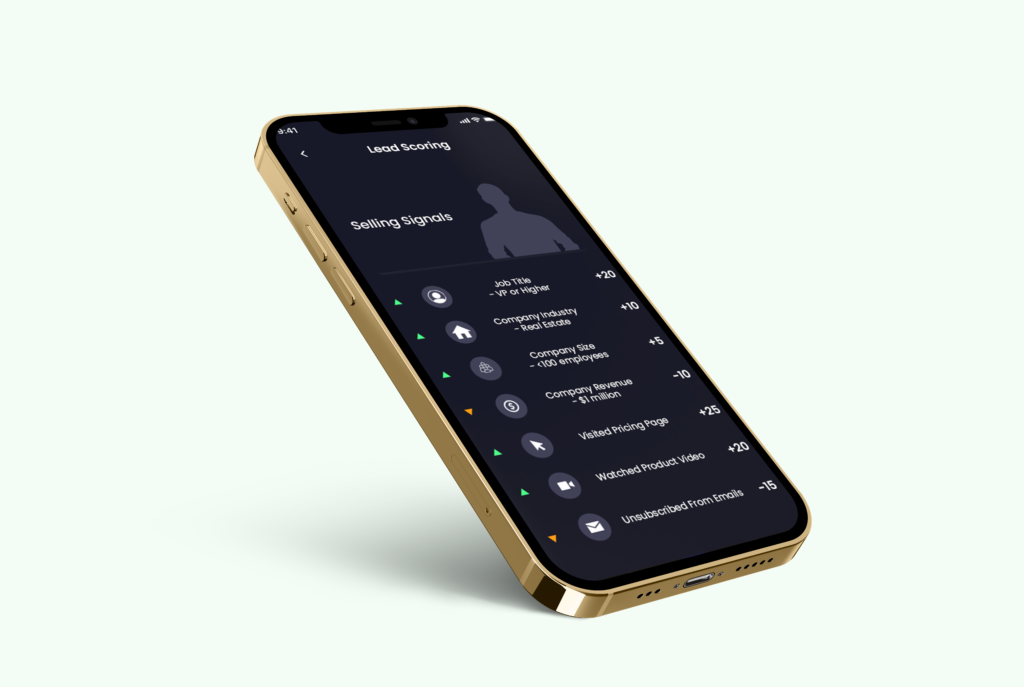Lead Scoring Best Practices
In an ideal world, a successful marketing campaign will come with hundreds and thousands of leads. An abundance of leads is what we’re all searching for — but how should we go about prioritising the leads that have the highest chance of conversion?
This is where lead scoring comes into play.
What is lead scoring?
Lead scoring is a process where leads are organised and sorted based on their potential for conversion. This is helpful for any organisation, because it enables us to focus the effort of the sales team to get more leads down the funnel more efficiently.
How does lead scoring work?
In the process of lead scoring, leads are ranked based on certain attributes that can be gathered from your existing client database.
These attributes from leads data can be combined into something called a ‘lead-scoring model’. In this model or system, each lead is given points for each attribute that we predetermine as desirable — and if they reach a certain target value, the lead can then be moved along to be labelled as a viable prospect.
What does lead scoring mean for a sales team?
After each lead is attributed their points and have reached a target value, this is where the sales team can come in and focus their efforts for maximum reward.
The leads with the highest rankings should be prioritised, as these are the prospects that have been identified as having the highest chance of conversion and moving successfully along the funnel.
The leads that don’t qualify for the determined target value should be nurtured further and this process helps drive the efficiency between the marketing and sales team.
How can I create an effective lead-scoring model?
Once you (hopefully!) have an abundance of leads and enough attributes to score them against, you can start preparing your lead-scoring model.
The best part about most CRM platforms is the availability of lead-scoring model generation. Marketing automation platforms like Salesforce and ActiveCampaign offer their own lead-scoring tools, which means you’re able to easily build your own predictive models with existing in-platform data.
What kind of data should be included in a lead-scoring model?
There is no right or wrong answer to the question of what data should be used in the creation of an effective lead-scoring model. It will vary from case to case, depending on what attributes have contributed to lead conversion in your organisation’s past and what your business’ focus and goals are.
Below, we’ve provided a few examples of the types of data that can be used in a great lead-scoring model to increase conversions:
Demographic data
Demographic data can be obtained from form fills on your website.
It involves information that are based on the attributes of your customer base, like their age, location and financial status, and allows you to remove points from (and deprioritise) leads who might not fit your ideal buyer persona.
Firmographic data
Firmographic data can be really useful in developing effective B2B sales processes and account-based marketing.
It provides details and information regarding a company or organisation, such as their industry, the number of clients they service, and their geographic location.
Technographic data
This form of information can help us understand the technological processes of the company, especially when we’re dealing with B2B marketing.
Technographic data provides information such as the hardware, software and technology stack that is utilised by a company or organisation.
Behavioural data
Behavioural data can be particularly useful for B2C companies, because it helps us understand the actions that are taken by a potential lead which might help bring them further down the sales funnel.
This can include actions such as clicks, downloads, and the number of page visits — all information that can help segment customers into likely vs unlikely conversions.

What is best practice in lead scoring?
Now that we can understand the kind of data to populate our lead-scoring models with, it’s time to learn the practical ropes of lead scoring.
Here are some of the best practices you can implement to optimise your strategies:
1. Let sales guide the way
In this situation, it’s best to let your sales team be your guide. They are in the best position to help you understand what to look out for in a successful prospect, and this can help you choose the right attributes for your model — and ultimately decide what your ideal customer looks like in order to better target them.
2. Experiment with different models
Not being locked into one specific lead-scoring model can help us understand which customer attributes have the most impact on conversion. Overall, this is useful in creating a more precise and accurate model which provides the most value to the organisation.
3. One size does NOT fit all!
Sometimes, a model based on historical data doesn’t allow us to expand and evolve to fit potential new leads. The market and our customer base is always changing, so it’s important to always refine our lead-scoring model and experiment with various scores and attributes to accommodate this ever-growing market. After all, there could be multiple buyer personas which work for your offering, and a versatile marketing campaign can target more than just one kind of customer.
Go on, score some leads
Lead scoring is a great way to focus your organisation’s resources and efforts into viable leads and prospects, leading to greater efficiency and, ultimately, a higher return on investment. What’s not to love?
